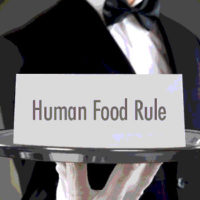Time for Change from Head to Toe: Animal Food Safety Regs Are Final

The Food Safety Modernization Act (FSMA) was signed into law in January 2011, promoting a proactive approach to food safety in this country. The regulations implementing those preventive controls for both human and animal food were finally released by the U.S. Food and Drug Administration (FDA) and published in the Federal Register on September 17, 2015. Both rules are commonly referred to as “Preventive Controls Rules.”
The changes in regulatory demands are comprehensive and may be onerous; probably more so for companies producing animal foods than for any other impacted facilities. Safety concerns with animal food include illness to the animals consuming the food as well as to humans handling the food. Both animal feed and pet food are included are covered by the rule.
Preventive Controls for Animal Food can be broken down into two areas of focus: current Good Manufacturing Practices (cGMPs) and Written Food Safety Plans.
I. Current Good Manufacturing Practices
The animal food industry has not previously been governed by industry best practice standards for manufacturing: cGMPs. Under the new rule, FDA is for the first time establishing what is refers to as baseline cGMPs for facilities that manufacture, process, package and/or hold food for animals. The term “baseline” is used to convey that these standards are a minimum to be followed. The rule allows a facility the flexibility to create additional standards with consideration given to the type of animal food and the particular facility involved. The ultimate goal of these cGMPs is to protect against or to minimize the contamination of animal food, while acknowledging that complete elimination of contamination is not always possible.
At the baseline level, FDA has set forth specific cGMPs relating to the following categories. Details for these categories are included in the rule.
• Personnel. All reasonable measures must be taken to ensure that personnel who come in contact with animal food, animal food-contact surfaces and animal food-packaging materials follow Good Hygiene Practices.
• Plant and grounds. A facility’s buildings and surrounding grounds must receive appropriate maintenance and pest control, and a plant’s construction, size and design must be adequate.
• Sanitation. Operations must insure clean and sanitary conditions of facilities and fixtures. In addition, there are restrictions on the use and storage of certain toxic materials.
• Water supply and plumbing. Facilities must have appropriate water supplies, plumbing, sewage and hand-washing facilities.
• Equipment and utensils. Equipment, utensils and food-contact surfaces must be designed, constructed and maintained to protect against contamination of the food product.
• Plant operations. Management must ensure that all processing, packaging, holding and distribution of animal food is conducted according to cGMPs.
• Holding and distribution. Conditions must protect against contamination and deterioration of animal food in the storage and distribution processes.
• Holding and distribution of human food by-products for use in animal food. Manufacturers of human foods objected to the draft regulations in that they could be held to be responsible for both human food regulations and animal food regulations when the by-products from human food products were sold as ingredients in animal foods. The FDA has clarified that those human food manufacturers will not be required to comply with animal food regulations when they sell by-products unless they perform additional processing before sale. Animal food manufacturers are responsible for insuring the safety of those by-products as ingredients in their products.
II. Written Food Safety Plan
Covered animal food facilities must create a written food safety plan and continually insure its enforcement and effectiveness. Every step in the process must be documented, including the reasons behind each decision to act or to not act. Documentation must be maintained and provided upon request.
A. Written Plan
The primary component in creating a food safety plan includes conducting a Hazard Analysis and designing preventive controls. In an effort to allow flexibility for a manufacturer to design a safety plan which meets the unique needs of both its food product and its facility, the rule is in places left intentionally vague. In fact, FDA has declined to provide even a sample plan. It is clear that a manufacturer must analyze each of its facilities and create separate written safety plans for each.
An animal food manufacturer must first perform a Hazard Analysis. Significant hazards which are either known or reasonably foreseeable must be identified, including biological, chemical and physical hazards. Hazards might be present in or around food because they occur naturally, are unintentionally introduced or are intentionally introduced for purposes of adulterating the food for an economic gain.
Preventive controls must then be designed and implemented to provide assurance that the risk of that hazard will be significantly minimized or prevented. Preventive controls as referenced in the rule are also intentionally not defined so as to allow flexibility to the food manufacturer. Preventive controls will also include a mandated written recall plan for any food presenting a potential significant hazard.
If a hazard is identified which can only be preventively controlled by another participant in the food chain, a supply chain program can be developed which will verify that the participant with the ability to prevent the hazard does so. When another participant in the chain is responsible for exercising a preventive control, a manufacturer must obtain written confirmation that participant is performing that responsibility. In that situation, the manufacturer must disclose to its customer that it did not itself process the food product to control the identified hazard.
B. Management of the Food Safety Plan and Its Components
To insure that the hazard analysis is and remains an accurate assessment of risk and that the preventive controls remain effective, ongoing management of the food safety plan is required. Management of that plan includes monitoring activities, corrective actions and verifications.
Monitoring activities should be designed to confirm that the preventive controls are properly implemented and are consistently performed. Corrections or corrective actions must be taken whenever it is determined that the preventive controls are ineffective, not being consistently performed or that there is some problem that has occurred in implementing the preventive control. Monitoring must be carefully documented, including reasoning behind decision.
Management of food safety plans must also include verification. Verification must confirm that monitoring activities are occurring, that corrective actions are taken and that the entire plan and its procedures are re-evaluated as appropriate. Even when working well, a facility’s written safety plan must be re-evaluated in total every 3 years.
C. Persons Qualified to Design and Manage Safety Plans
The requirements of creating a written food safety plan and the monitoring of the same must be performed by a “qualified individual.” To meet the definition of a preventive controls-qualified individual, one must either successfully complete an FDA approved standardized curriculum or have equivalent experience. The curriculum is currently being developed by FDA in partnership with the Food Safety Preventive Controls Alliance.
III. Compliance Deadlines
Each facility producing animal food has two separate compliance deadlines; one for compliance with cGMPs and one for compliance with preventive controls requirements:
• Very small businesses (averaging less than less than $2,500,000 per year in both annual sales of food for animals) – September 17, 2018 for cGMPs and September 17, 2019 for preventive controls.
• Small businesses (fewer than 500 full-time equivalent employees) – September 18, 2017 for CcGMPs and September 17, 2018 for preventive controls.
• All other businesses – September 19, 2016 for cGMPs and September 18, 2017 for preventive controls.
FDA will be issuing guidance documents including guidance on hazard analysis and preventive controls and on compliance with cGMP requirements. FDA has also stated that it intends to provide unprecedented education and technical assistance to support the industry in compliance efforts.
Kathy Hardee, Esq., is co-chair of the Food & Agriculture Industry Group at Polsinelli, PC, which is composed of a team of attorneys from every legal practice area and who each have a focused background in the food industry.
Looking for a reprint of this article?
From high-res PDFs to custom plaques, order your copy today!






